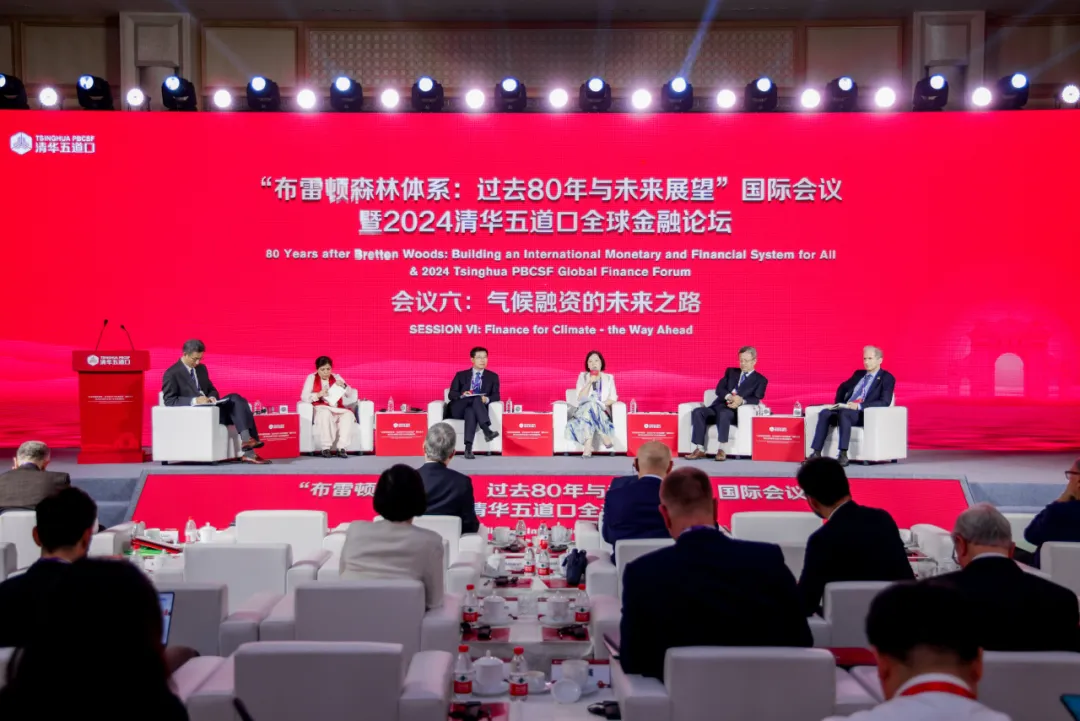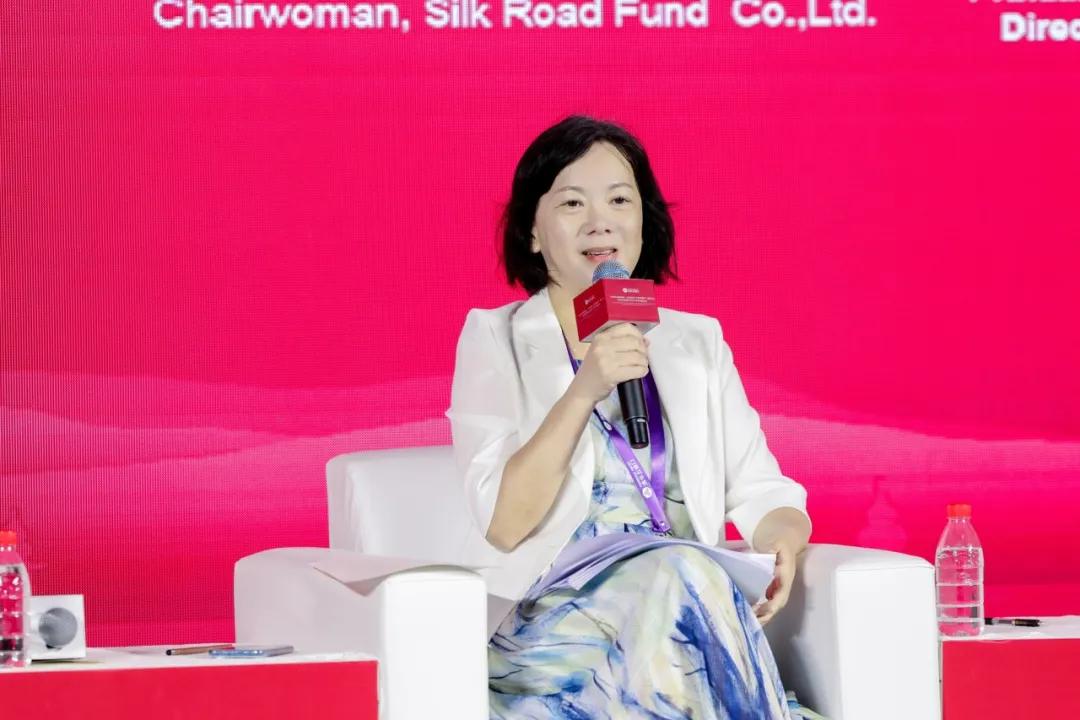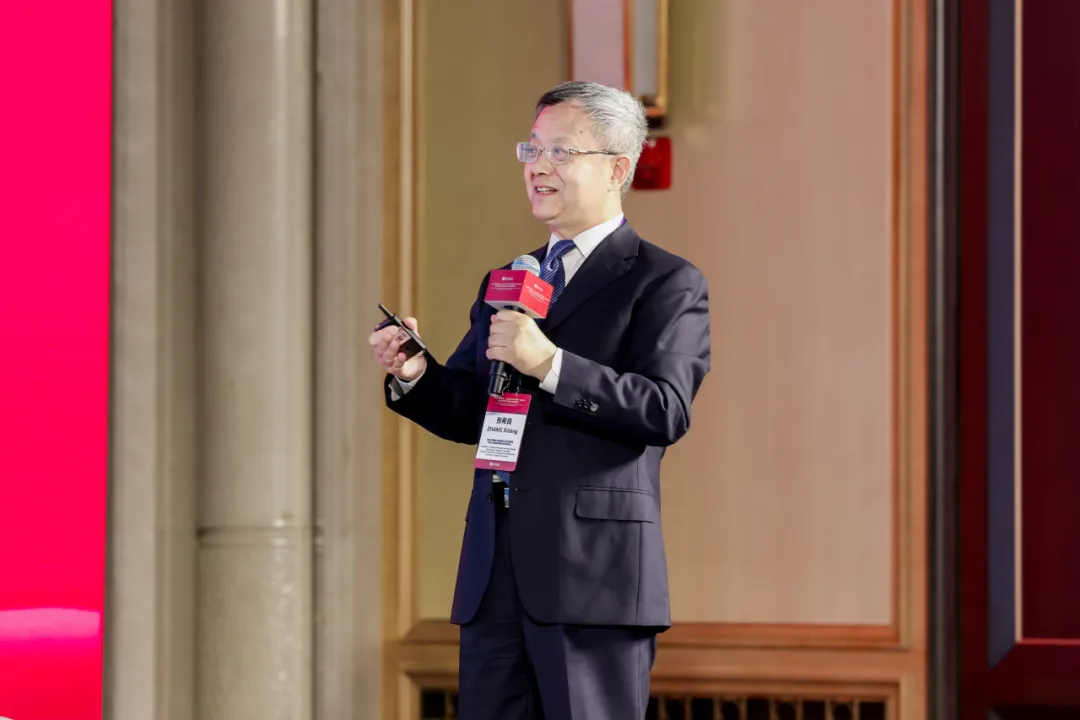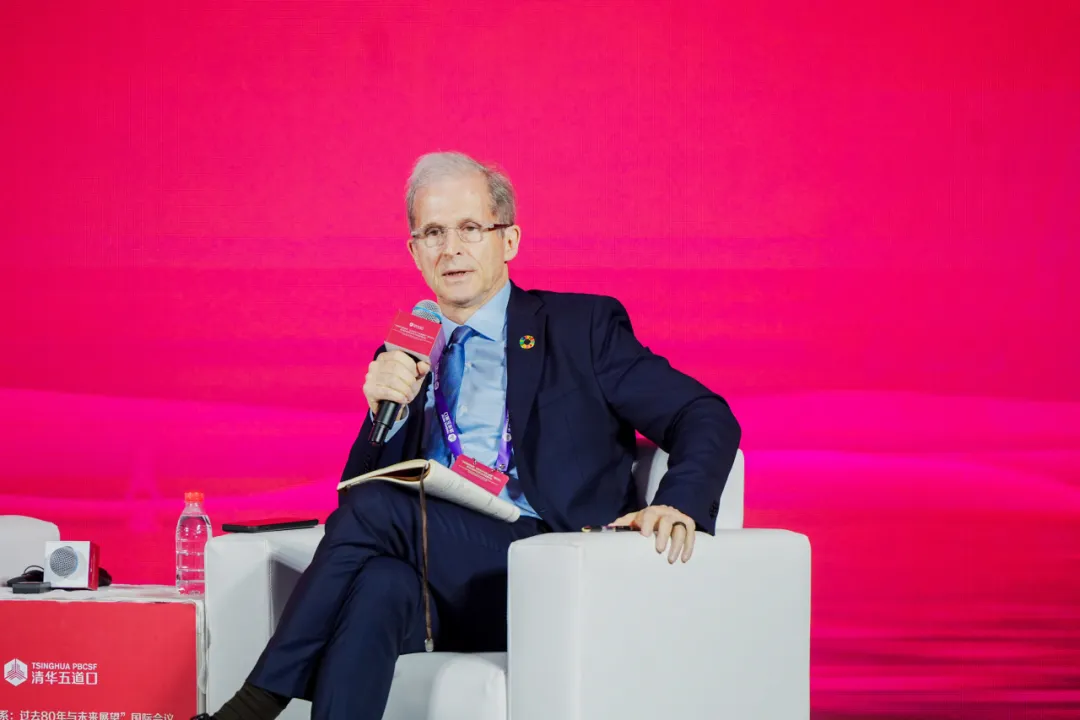On May 27-28, 2024, "80 Years after Bretton Woods: Building an International Monetary and Financial System for All" & 2024 Tsinghua PBCSF Global Finance Forum were successfully held in Hangzhou, Zhejiang Province, China. Focusing on the topic of Finance for Climate - the Way Ahead, SESSION VI was held with JU Jiandong, Chair Professor, Tsinghua PBCSF moderating and Shamshad Akhtar, Former Under-Secretary-General, United Nations; Former Governor of the Central Bank of Pakistan, WANG Xin, Director, Research Bureau, PBoC, ZHU Jun, Chairwoman, Silk Road Fund Co.,Ltd, ZHANG Xiliang, Professor, Institute of Nuclear and New Energy Technology, Tsinghua University; Director, Institute of Energy, Environment and Economy, Tsinghua University and Erik Berglof, Chief Economist, AIIB joining the panel discussion.

The picture shows the roundtable discussion in progress
Shamshad Akhtar stated that, according to scientific evidence from the Climate Expert Committee, global average temperature increases need to be limited to 1.5°C by the end of this century. Achieving this target requires increased investment in decarbonization and achieving zero-carbon emissions, including corporate financing systems and other non-official financing.

The picture shows Shamshad Akhtar
Specifically, Shamshad Akhtar pointed out that the demand for climate financing is projected to be in the trillions. Currently, 153 developing countries need to invest $6 trillion in climate change initiatives by 2030. Whether global climate financing can be achieved by 2050 largely depends on whether Asia can successfully transition, as Asia accounts for 50% of green emissions. Due to its large population, Asia's demand for energy is substantial, and energy needs are expected to increase more than 2.5 times by 2050. She particularly mentioned that Asia currently lacks sufficient funds in this area, and if Asia's economic growth does not include effective climate protection, it could undermine the global green transition.
Shamshad Akhtar recommended that each country should digitalize its tax systems and make fiscal systems more digital, as these steps would help mobilize more domestic funds.

The picture shows Zhu Jun
Zhu Jun offered recommendations for climate investment from a market perspective. She outlined two main models of climate investment: The first is a "top-down" approach, led by governments, which involves guiding funds into climate finance through industrial subsidies, carbon taxes, monetary, and financial policies, and increasing the cost for businesses that fail to comply with climate investment principles by establishing standards for information disclosure. This model has been adopted by China and the European Union. The second approach is a "bottom-up" model, driven by the market with less government policy intervention. The United States primarily followed this model before the pandemic, but with the introduction of the Inflation Reduction Act (IRA) in 2022, it signaled a shift towards a more "top-down" approach. Zhu Jun stated that each model has its advantages and disadvantages and should be used in conjunction. The government is responsible for setting investment classification standards and disclosure requirements, while market institutions should take proactive steps, utilizing various resources to promote climate finance.
Zhu Jun also noted challenges in market practice for climate investment, including balancing aggressive transformation with energy security, addressing short-term modest returns, and dealing with immature technological innovations. Government departments should act to create an investment environment conducive to market-driven funds.

The picture shows Zhang Xiliang
Zhang Xiliang presented the potential negative impacts of climate change, noting, for example, that if carbon reduction measures are not implemented, climate change could reduce China's GDP by up to 8% by the end of the 21st century. Through data simulation, Zhang Xiliang predicted that achieving China's carbon neutrality goal by 2060 would require an investment of 250 trillion RMB from 2025 to 2060, including investments on both the supply and demand sides.
How can such massive investments be realized? In response, Zhang Xiliang suggested that carbon pricing is a primary mechanism to facilitate climate financing. He proposed a new method of climate financing that integrates Article 6.2 of the Paris Agreement with the green Belt and Road initiative organically. As China has initiated a voluntary emissions reduction market, it may be possible to transfer "carbon credits" generated by Chinese enterprises investing in green projects in countries along the Belt and Road back to China.

The picture shows Erik Berglof
Erik Berglof elucidated the perspective on climate financing from the standpoint of developing countries, noting that there are significant challenges in mobilizing domestic resources, especially in countries with limited capacities. He highlighted the critical issue of how developing countries can use industrial policies and financial markets to enhance national capabilities.

The picture shows Jiandong Ju, the moderator of the roundtable discussion
Erik Berglof also stated that the Asian Infrastructure Investment Bank (AIIB) has become one of the most important market participants. Every transaction conducted now is evaluated for its compliance with the Paris Agreement. In June of this year, the AIIB's board will decide whether to provide policy-based green financing in the future.